- Your skin
-
Our products
Do you know well atopic dermatitis ?
DEXERYL supports you and take care of your dry skin each day
-
CLINICAL RESULTS
- About dexeryl
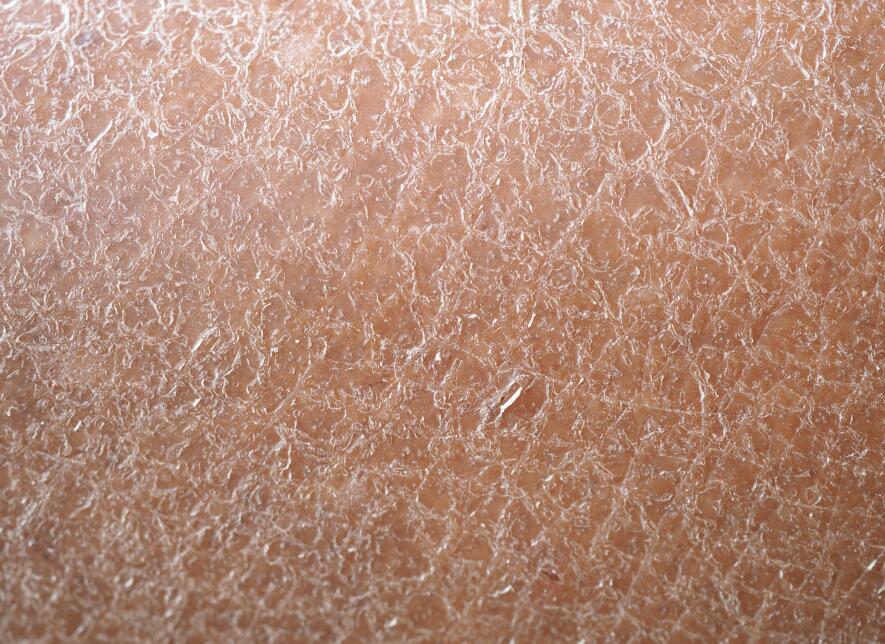
Ichthyosis We should talk about ichthyosis because there are several forms of it of varying severity1,2. Ichthyosis is a rare genetic skin disease characterised by very dry skin and a fish-scale appearance. But what is ichthyosis? What are the symptoms? What are the causes? What are the different forms? What are the consequences of this condition? What can be done to reduce the symptoms?
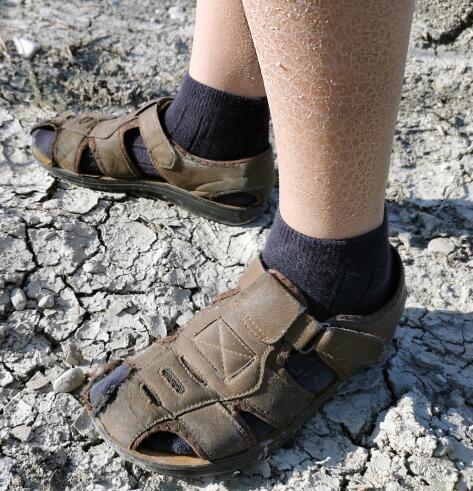
Summary
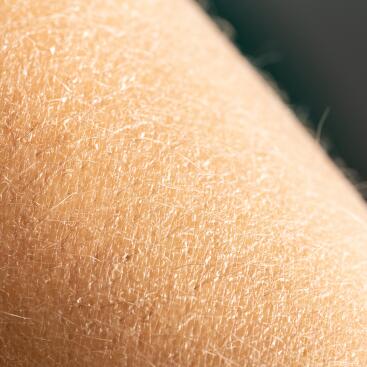
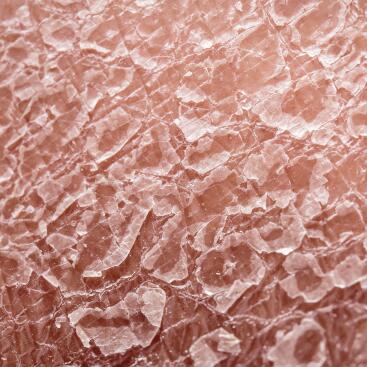
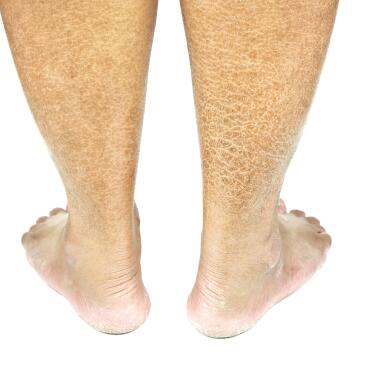
The term ichthyosis comes from the Greek " ichthus " which means fish3, referring to the scale-like appearance of the skin of some patients.
Ichthyosis is a dermatological condition characterised by:
The severity of clinical signs varies: the upper body, arms and legs are the most affected areas7, but symptoms can affect the whole body5.
It is a chronic disease, meaning that the symptoms are permanent8.

In the majority of cases, ichthyosis is a genetic disease and is, therefore, hereditary. It is caused by the mutation of one or more genes coding for the production of skin barrier components5. Hereditary ichthyosis appears at birth or in early childhood1.
However, there are acquired cases of ichthyosis that appear in adulthood. Their development may be linked to the presence of an underlying cancer (lymphoma, visceral cancer, etc.), malnutrition, or a skin condition such as systemic lupus erythematosus.
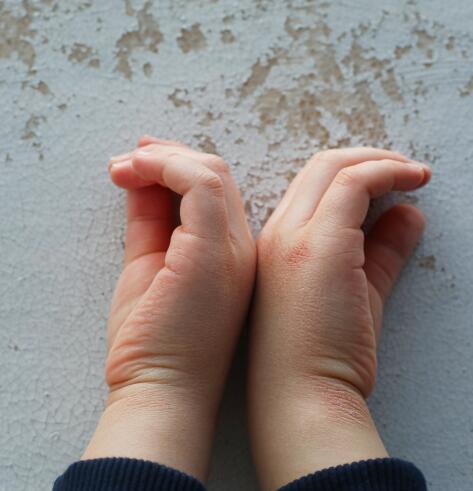
The most common form (95% of people have this form).
A baby is born with healthy skin and then, at around three months, patches appear on the soles of the feet and the palms of the hands.
The symptoms gradually spread to the upper body (especially the back), and to the arms and legs where the skin becomes scaly.
These scales are quite thin and white.
Ichthyosis vulgaris is caused by a mutation in a gene that codes for the synthesis of a protein involved in cell differentiation in the skin.

The second most common form.
Affects about 1 in 5000 men9.
It appears in the first few months of life and affects almost only boys.
It is characterised by dark scales forming large flakes mainly on the arms and legs, with a dirty and unsightly appearance. Hyperkeratosis and scaling improve with age and summer sun.
This is a more serious form than the previous one.
Photo source: DERMAWEB
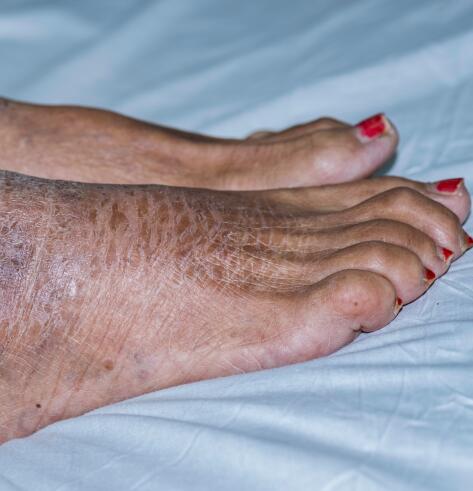
This is much rarer and is characterised by large patches of thick, brown scales all over the body. They take on the appearance of laminated paper-like strips.
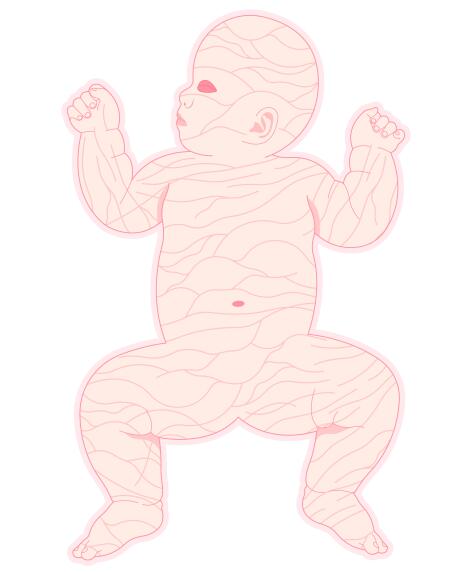
This is the most severe form of congenital ichthyosis but also the rarest (1 in 1 million children).
A baby is born wrapped in a translucent, taut, shiny film of collodion covering the entire body.
This gradually gives way to large, very thick, ridged and hard scales all over the body.
This usually appears in adulthood and can be generalised or localised. It is characterised by thin, dry and rough skin, scattered with flakes. It is not associated with itching.
Patients suffering from ichthyosis tend to not sweat and are, therefore, more sensitive to external conditions (temperature, dryness, humidity) and have difficulty adapting to seasonal changes5.
Skin superinfections are more common and the lesions may have an unpleasant odour.
Ichthyosis, when it affects the hands, can cause a decrease in the precision of certain gestures. In severe forms, it can often cause cracks on the soles of the feet, causing pain when walking.
To date, there is no curative treatment for the various forms of ichthyosis. Management is mainly based on symptomatic and local treatment of skin dryness and hyperkeratosis.

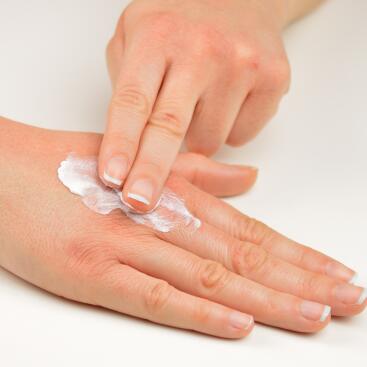

Emollients are the first line of treatment. Whatever the form of ichthyosis, there is an alteration of the skin's barrier function and an emollient must be applied daily. Moisturising the skin at least twice a day and after each bath or shower is recommended. The emollient must be suitable for sensitive or even atopic skin and combined with suitable hygiene products (without fragrance, with mild surfactants) so as not to irritate the skin. Appropriate daily hydration and hygiene will work in synergy to treat the symptoms of ichthyosis. In severe forms, medical care with emollients and full body wraps may be necessary.
These are mainly based on the use of keratolytic products, useful in case of thick and/or numerous scales. These are mainly urea-based products. They should be applied once or twice a day and then it is advisable to space out the applications in the maintenance phase.
Clinical trials are currently underway to evaluate the efficacy and tolerability of local treatments based on vitamin A derivatives.
These are medicines with molecules called retinoids as their active ingredient. These are vitamin A derivatives11.
Other treatments, including injectable biotherapies prescribed for other dermatological conditions, are undergoing clinical trials for the treatment of ichthyosis.
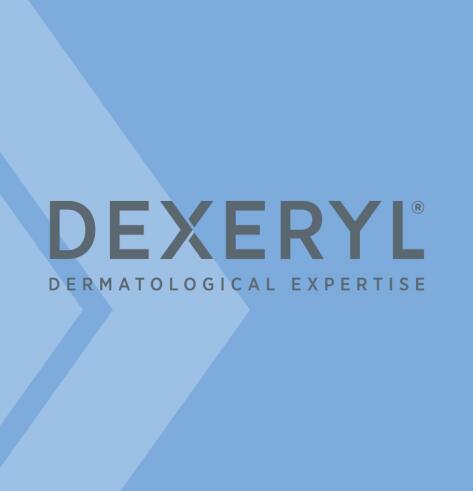
As you can see, the basis for the treatment of ichthyosis is, above all, appropriate hygiene and daily moisturising of the skin.
DEXERYL supports you with emollient skin care and cleansing products for the treatment of the signs and symptoms of dry skin, particularly in the case of ichthyosis.

DEXERYL Emollient Cream can be used to protect the skin and treat the signs and symptoms of dry skin, particularly in the context of ichthyosis, thanks to:
Discover the DEXERYL range
Sources: